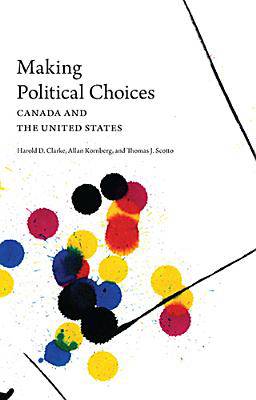
- Retrait gratuit dans votre magasin Club
- 7.000.000 titres dans notre catalogue
- Payer en toute sécurité
- Toujours un magasin près de chez vous
- Retrait gratuit dans votre magasin Club
- 7.000.000 titres dans notre catalogue
- Payer en toute sécurité
- Toujours un magasin près de chez vous
Making Political Choices
Canada and the United States
Harold D Clarke, Allan Kornberg, Thomas J ScottoDescription
Recent national elections in Canada and the United States have been exciting, consequential contests. In the 2004 federal election in Canada, the Liberal Party narrowly clung to power after a volatile and bitter battle with the new Conservative Party. In 2006, the Conservative Party won a fragile victory, replacing the scandal-ridden Liberal government. In the 2000 American presidential election, Republican George W. Bush became the first candidate in over 100 years to capture the presidency without a majority popular vote. Four years later, Bush finally attained a narrow popular mandate but only after a hard fought campaign. Then, in 2006, the Republicans suffered a stunning reversal of political fortune, losing control of both Houses of Congress, as public opinion turned massively against the president.
In Making Political Choices: Canada and the United States, Harold Clarke, Allan Kornberg, and Thomas Scotto employ a wealth of new survey data to describe these elections and evaluate competing theories of party support and voter turnout. While examining various arguments, the authors contend that a valence politics model provides a powerful explanation of voting behavior in Canada, the United States, and other mature democracies.
Spécifications
Parties prenantes
- Auteur(s) :
- Editeur:
Contenu
- Nombre de pages :
- 304
- Langue:
- Anglais
Caractéristiques
- EAN:
- 9780802096746
- Date de parution :
- 01-11-08
- Format:
- Livre broché
- Format numérique:
- Trade paperback (VS)
- Dimensions :
- 152 mm x 229 mm
- Poids :
- 394 g







